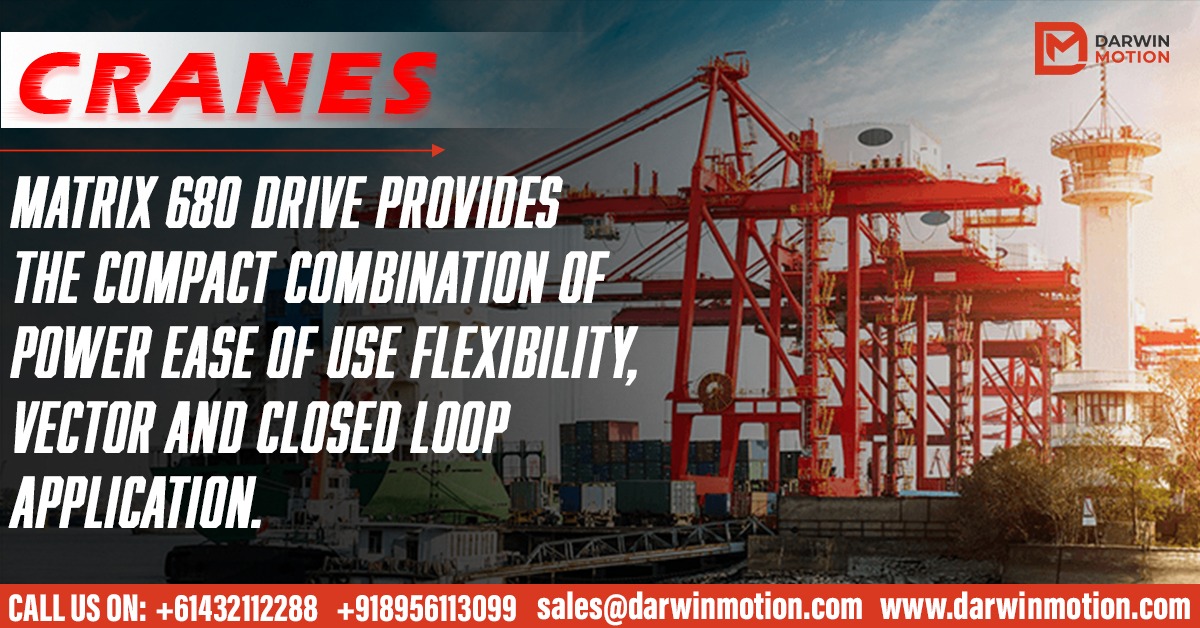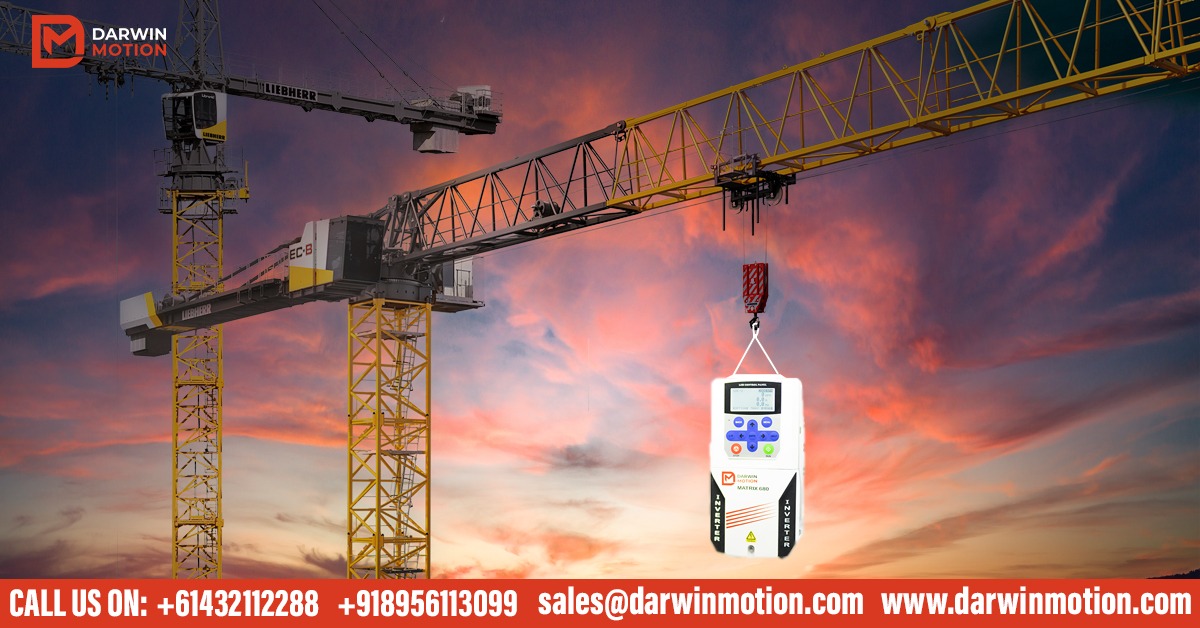

A crane hoist is a lifting device used for moving heavy loads, and a Variable Frequency Drive (VFD) can be used to control its motor. A VFD can provide precise control over the speed, torque, and position of the hoist, which can result in improved accuracy and efficiency in the crane's operation.
The tower crane is a lifting tool that is frequently used on building sites. For beginning and speed regulation, the conventional controlling methods typically use AC wound-type electromotor serial resistance. The impulse current is quite large as a result of frequent positive and negative rotating and long-term heavy load operation. The slip ring, carbon brush, and contactor of the motor are frequently harmed as a result of the unfavorable environment of various working fields.
Typical phenomena include burned contact terminals on contactors, blazing carbon brushes, overheating motors, and resistance. Additionally, the swing mechanism's bearing must frequently be replaced due to the intricate circuit.
The low-speed motor is in braking mode while the high-speed motor is still operating because the main hoisting mechanism is primarily powered by two motors on one shaft. They are constantly in opposition to one another, with one functioning and one braking. Additionally, there is a significant mechanical shock while going from high to low speed, which frequently results in tooth striking.
When moving from high speed to low speed, there was once a situation in which the product had already been placed and the worker had the mooring rope in hand. Then, the low-speed motor experienced brake failure. It is quite risky. Axle breaking event also occurs on occasion.
A Variable Frequency Drive (VFD) can be used in tower cranes to control the speed and torque of the hoisting motor. The use of a VFD can result in improved efficiency, safety, and performance of the crane.

The high maintenance frequency and expense result from the high malfunction rate, which has a significant impact on manufacturing.
Because the induction motor has unmatched benefits, including a straightforward and sturdy design, a low price, and simple maintenance. Therefore, employing a VFD dragging three-phase induction motor in place of a standard speed regulator can fundamentally address the issue of the tower crane's high failure rate.
Additionally, it boasts cutting-edge technology and a substantial energy-saving effect. It is the optimum tower crane transmission controlling mechanism.
Ordinary asynchronous motor variable frequency drive + eddy current control: The eddy current control The eddy current braking process slows down the swing of the tower crane, and there are also unsatisfactory problems such as system complexity, increased cost, increased failure points, and comfort
Zero-speed brake:
Most manufacturers are unable to achieve open-loop zero-speed brake. They all adopt the pre-estimated time or frequency brake method, but the brake time is different under different load conditions, which is easy to cause slippage and cause, the brake pads are worn out.
Zero-speed gate opening: Most manufacturers cannot achieve zero-speed gate opening, and they all use torque compensation, but because the load is changed, it is easy to slip down (insufficient compensation torque) or backlash (excessive compensation torque)
Brake logic:
1) In open-loop control, the brake logic takes the output frequency and current as the judgment conditions, but the frequency and current are not completely equal to the motor torque. It is easy to generate the current and the frequency has reached but the motor output is not enough, causing the hook to slip, especially when the hook is heavy; or when the hook is empty, the motor output is too large to cause backlash. 2) Closed-loop control will increase the encoder, and it is easy to cause quality problems or accidents due to encoder failure or interference in harsh environmental conditions.
Oscillation of slewing mechanism:
The tower crane boom is generally tens of meters or even more than 100 meters long, and the heavier the tower crane, the greater the weight of the boom itself, the greater the moment of inertia of the tower crane, which must be absorbed during the rotation acceleration Energy. This part of the energy is released when the rotation is decelerated, which causes the instability of the tower crane's slewing mechanism and affects the accuracy and safety of handling.